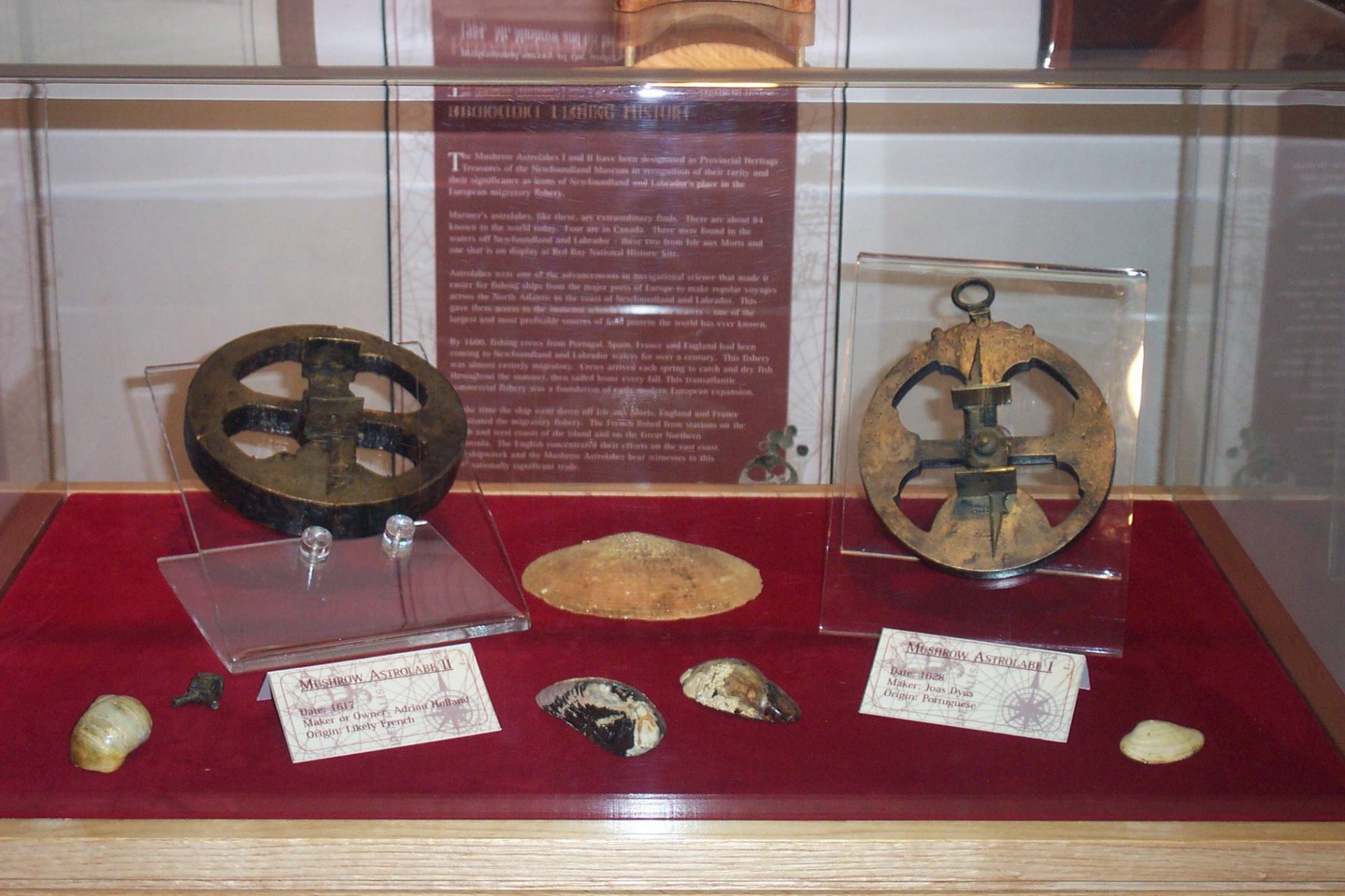The Mushrow Astrolabe I
The Mushrow Astrolabe I, an early maritime navagational instrument, is dated 1628 and was made in Portugal. The rare and valuable instrument was recovered by Wayne Mushrow from a ship wreck near Isle Aux Mort’s NL, Canada on November 26, 1981. It is in mint condition and in working order, it is indeed a very rare and valuable find for Newfoundland and all of Canada.
The owner of the famous explorer Champlain’s original maps, Joe C.W. Armstrong, commented on the founding of the astrolabe: “It is an occasion for all of Canada to celebrate”. The Smithsonian Institute, perhaps the world’s premiere scientific and historical institute, has described the Mushrow Astrolabe I as “Priceless”. The former Provincial Minister of Tourism and Culture, James Walsh, has described it as “The most significant find in our Province”.

The Mushrow Astrolabe II
The Mushrow Astrolabe II, dated 1617, andwas discovered near Isle Aux Morte (Island of the Dead), in July, 1983. It is in good condition and it is indeed a very rare and valuable find for Newfoundland and all of Canada.
The Mushrow Astrolabe II is thought to have been made by Adrian Holland and is of French origin. It is the latest dated wedge shape astrolabe in the worlds collection. Newfoundland is the only location in Canada to have two astrolabes on display together at any one time.
There is only one astrolabe of this particular type in the world as stated by A.N. Stimson of the Greenwich Maritime Museum in London, England.
The Mushrow Astrolabes I & II are the centerpiece of The Gulf Museum, Port Aux Basques, Newfoundland, Canada, and are on display every summer from May to September.

